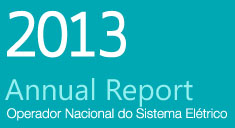Interconnection Tucuruí - Macapá - Manaus
The state of Amazonas was integrated to BIPS in July 2013, by a transmission system at 500 kV double circuit of the same tower, on the left bank of the Amazon River. With about 1,400 km long, part of the substation Tucuruı, passes through three intermediate substations of 500 kV nearby Xingu, Jurupari and Oriximiná in the state of Pará, and through the substation Silves, in Amazonas.
With the coming into operation of this interconnection, disabling much of the fuel oil thermal plants in Manaus was scheduled. However, due to delays in construction of 230 kV and 138 kV, the power system of Manaus was built by an interim configuration, which makes it necessary to operate with reduced exchange and maintain all thermal plants in operation.
The power system of Amapá remains isolated from BIPS due to delays in projects of receptor systems, with expected operation in September 2014.
The different configurations that are going to exist in 2014 as a result of these delays will require additional studies to define operational measures that reduce the risk of load shedding as much to Manaus as to Macapa, in an eventual loss of interconnection. It was also necessary to establish the amount of thermal generation which shall remain in operation during this temporary operation, to reduce the impacts of contingencies in the system.
Due to the uncertainties inherent in the performance of a system of 1400 km of transmission lines for dual circuit, with much of its infrastructure in the Amazon rainforest and extensive river crossings, it was necessary to define a Regional Load Alleviation Scheme (Erac), concomitant with an order of thermal generation as a way to mitigate the consequences of eventual interconnection losses. Thus, it will be possible to provide greater security and reliability to Manaus, which is one of the host cities of the 2014 FIFA World Cup.
